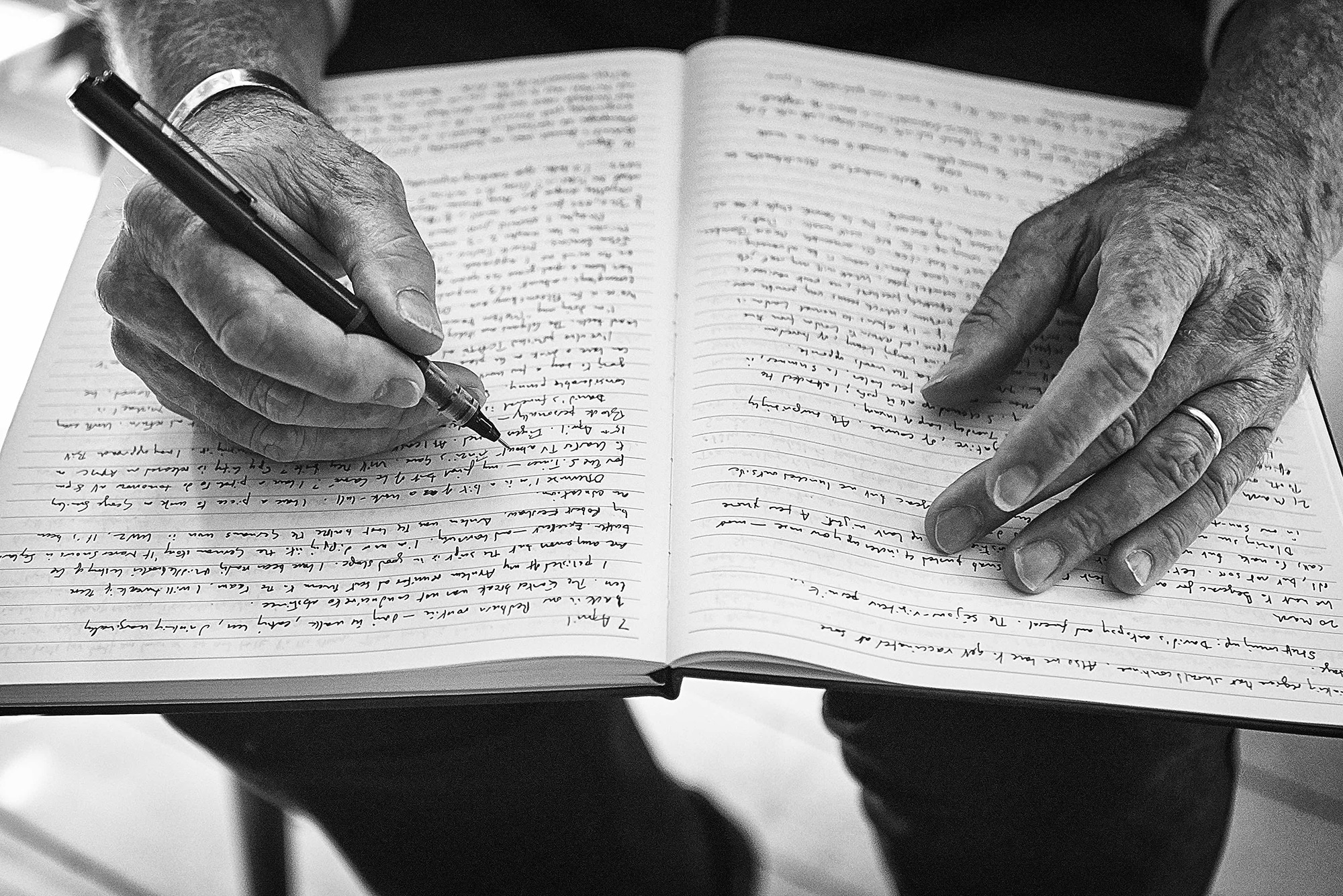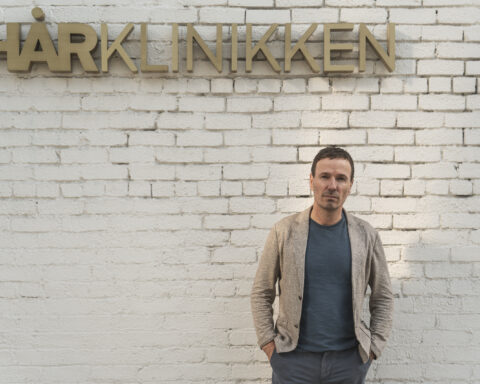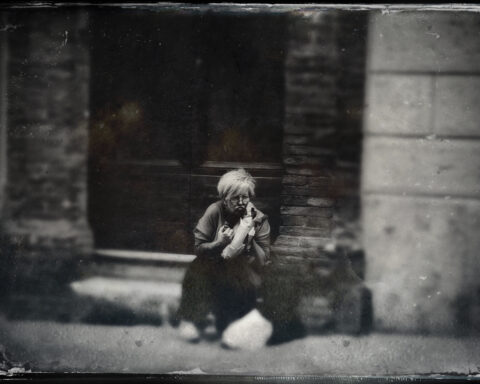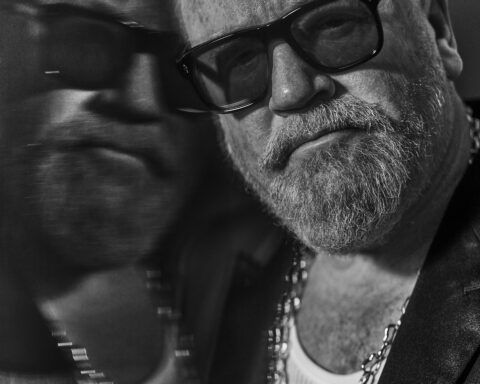Throughout the ages, man has found release in recording his thoughts; whether simply recounting aspects of his day, expressing his hopes and goals, or purging his darkest concerns.
The physical motion of putting pen to paper is an exorcism of sorts, a therapeutic exercise that has been employed by artists, luminaries, and folks from all walks of life. It’s a method of organizing our thoughts, separating the wheat from the chaff, and releasing our minds from the storms of overthinking and personal crisis.
It can also be a useful tool for building a picture of the things we wish to accomplish, a manifesting mechanism to pave the way, and plot the course of the dreams we wish to attain. This week’s Mr Feelgood cover star, ‘Lord of the Rings: The Rings of Power’ actor Ismael Cruz Córdova, told us how he has used journaling to plot his path from humble beginnings in Puerto Rico to the Hollywood A-list, and he’s not alone in harnessing its power.
The novelist William Boyd, a previous subject of our ‘Who the F*** Are You?’ profile, is among those to value the physical process of writing by hand. He writes all his novels in this way, as well as penning a journal to collect ideas and unburden himself of thoughts that may stop him from focusing on his work. “I just like physical writing,” he told us. “That head, hand, page interface is very important, I think.”
Originally published in 1992, Julia Cameron’s self-help book ‘The Artist’s Way: A Spiritual Path to Higher Creativity‘ was written to help people gain, or regain, self-confidence in harnessing their creative talents. One of the book’s central exercises is to write three pages, longhand and stream of consciousness, first thing in the morning, with many finding this habit to be life changing.
Further research has found that journaling helps reduce stress, sharpens memory, encourages achievement of goals, improves mood, cultivates mindfulness, and promotes good habits. So with this in mind, here are five successful people who used the tool of journaling to support their extraordinary body of work.
Leonardo da Vinci (1452-1519)
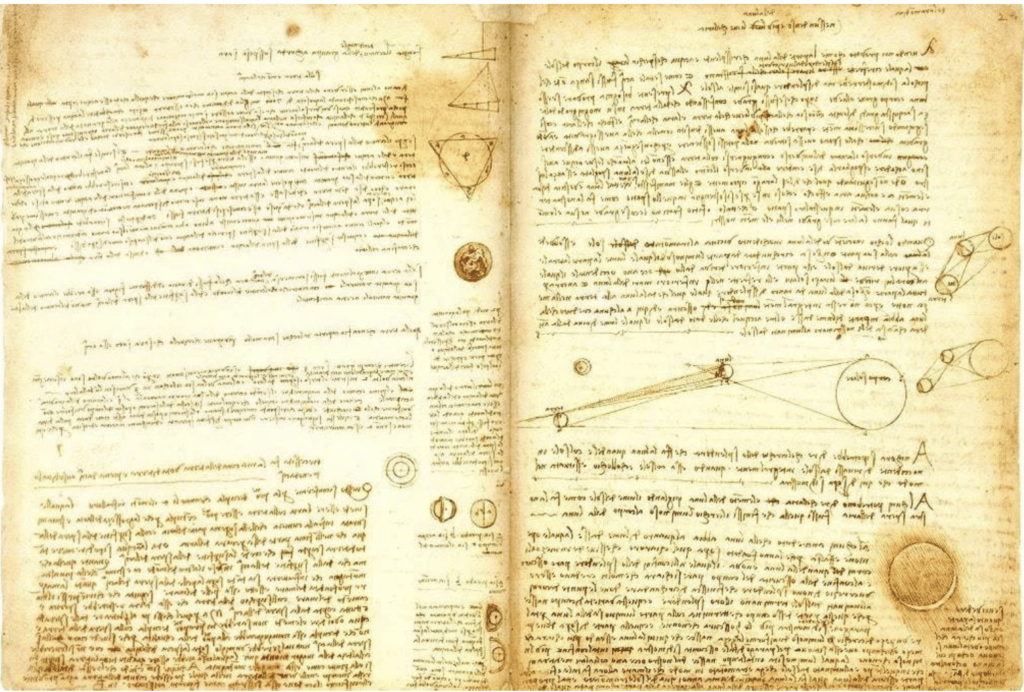
Leonardo da Vinci was a master painter, draughtsman, scientist, theorist, architect, sculptor and inventor, his ideas proven to be way ahead of his time. Aside from his magnum opus, the Mona Lisa, perhaps his best-known work and often regarded as the world’s most famous painting, he was also scrupulous in keeping journals, where he conceptualized flying machines, armored fighting vehicles, his ideas on solar power, and much more. An estimated 7000 pages from those journals survive, including the pages above from his 72-page journal ‘Codex Leicester’, which Microsoft co-founder Bill Gates purchased for $30.8 million dollars in 1994.
Susan Sontag (1933-2004)
One of the most influential critics of her generation, Susan Sontag was an American writer, philosopher, and political activist. Known predominantly for her essays, she wrote extensively about culture, conflict, AIDS, and human rights. A keen keeper of journals, which offered her an element of escape, she had this to say about the practice, “Superficial to understand the journal as just a receptacle for one’s private, secret thoughts — like a confidante who is deaf, dumb and illiterate. In the journal I do not just express myself more openly than I could to any person; I create myself. The journal is a vehicle for my sense of selfhood. It represents me as emotionally and spiritually independent. Therefore (alas) it does not simply record my actual, daily life but rather — in many cases — offers an alternative to it.”
Marie Curie (1867-1934)
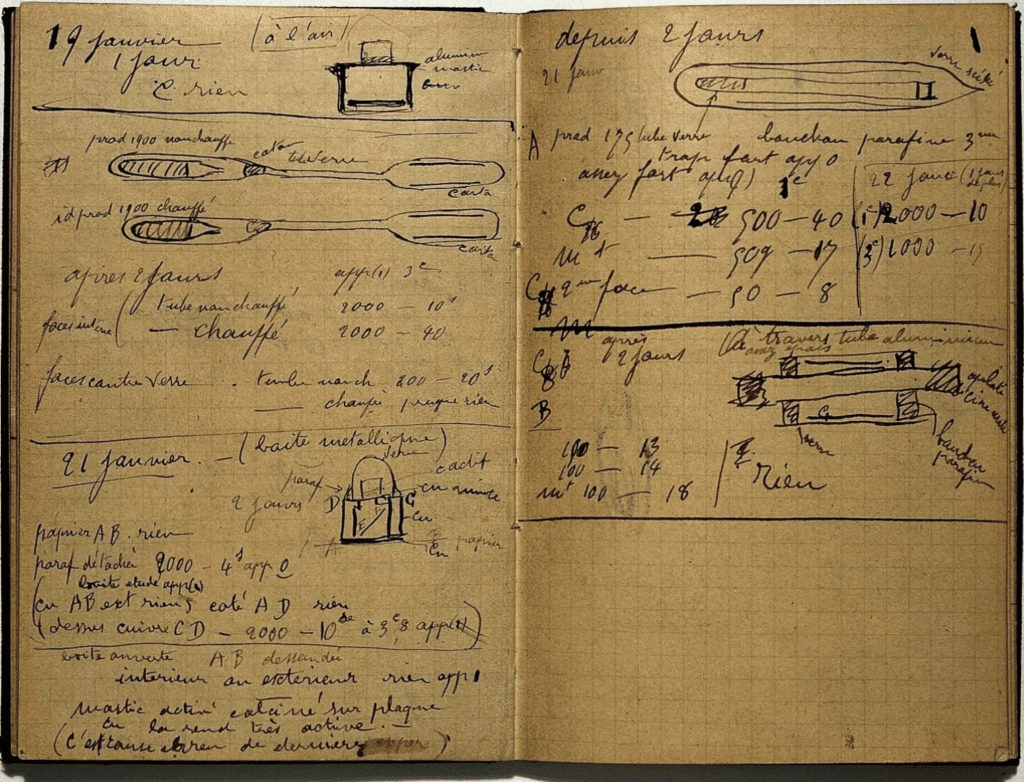
Considered the Mother of Modern Physics, Marie Curie, along with her husband Pierre Curie, discovered polonium and radium. For this discovery and her pioneering work in the field of radioactivity, Marie became a two-time Nobel Peace Prize winner, the first woman to be awarded the prestigious prize. The Polish-French scientist’s journals, illustrating her process, are available to view in the Bibliotheque Nationale in Paris, housed in lead-lined boxes. They are available to inspect, but only after the viewer has signed a waiver and agreed to wear protective clothing. Curie, known for keeping fragments of radioactive materials in her pocket, died aged 66 from a type of anemia brought about by the nature of her radioactive work.
Franz Kafka (1883-1924)
A Bohemian novelist and short-story writer, Franz Kafka’s work continues to influence and inspire a vast range of writers, critics, artists and philosophers to this day. His writing fuses elements of realism and the fantastical, typically featuring isolated protagonists facing bizarre predicaments and incomprehensible socio-bureaucratic powers. His most famous works include the short story ‘Metamorphosis’, which has been regularly adapted as a play, and the novels ‘The Trial’ and ‘The Castle’. Relegated to writing in his spare time as he supported himself working full-time at an insurance company, he was a keen letter writer and diarist, reflecting about the latter, “In the diary, you find proof that in the situations which today would seem unbearable, you lived, looked around and wrote down observations, that this right hand moved then as it does today, when we may be wiser because we are able to look back upon our former condition, and for that very reason have got to admit the courage of our earlier striving in which we persisted in sheer ignorance.”
Anne Frank (1929-1945)
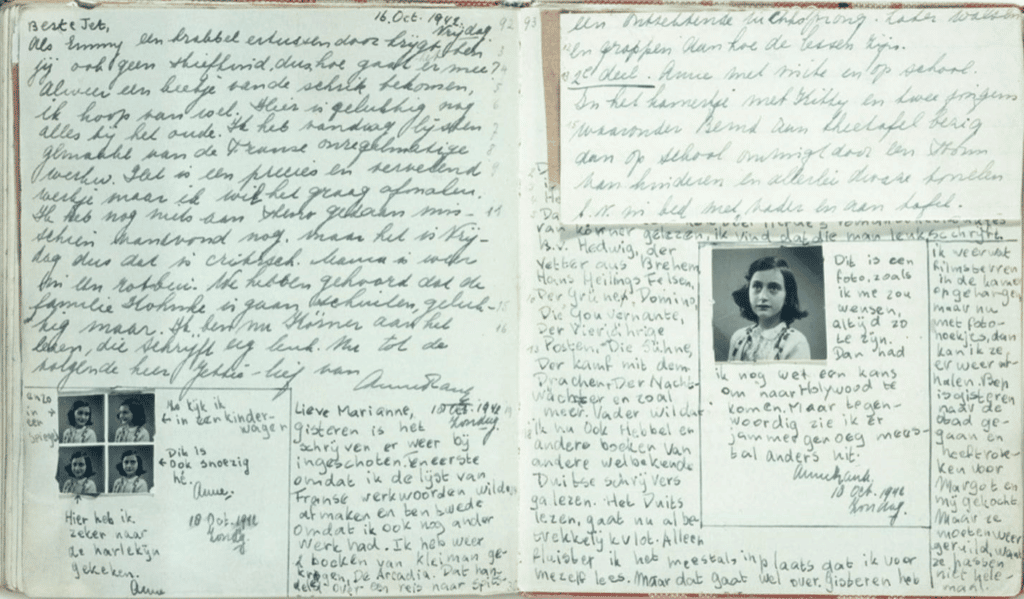
Probably the most famous diarist of the 20th Century, Anne Frank’s intimate musings as a 15-year-old have inspired books, films, plays, and the way we looked upon World War II. Born in Frankfurt, Germany, her family fled to the Netherlands in 1934 when she was four years old as a means to escape the rise of anti-semitic persecution following Adolf Hitler’s rise to power. As a Jewish teenager living in Amsterdam when the war broke out, Anne hid from the Gestapo with her family in a secret room behind a bookcase, in the building where her father Otto Frank worked. One of the most-discussed Jewish victims of the Holocaust, she gained fame posthumously with the 1947 publication of ‘The Diary of a Young Girl’ which documents her life in hiding from 1942 to 1944, during the German occupation of the Netherlands. After the family was captured, Anne and her sister Margot were sent to Auschwitz and then onto Bergen-Belsen, where they died before the Allied Forces liberated the camp. Her father, the sole survivor of the family, returned to Amsterdam after the war where he fulfilled his daughter’s ambition to become a writer by having her diary published. It has since been translated into over 70 languages and stands as one of the most influential books chronicling a unique perspective of that time in history.


